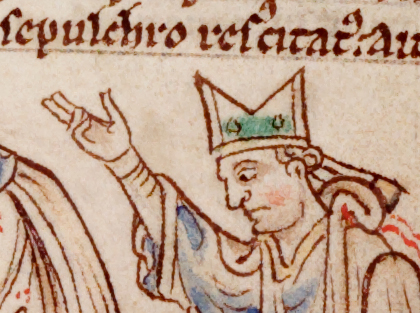
Parker Library 16, fol. 182r, by permission of the
Master and Fellows of Corpus Christi College, Cambridge.
On Spiders
Majuscules
Capital Letters in paleography are also called capitals, majuscules or simply caps.
Learning to distinguish capital letters from lowercase letters in a hand helps in reading manuscripts. Because scribes use punctuation marks erratically, capital letters serve an even more important purpose in medieval manuscripts than in modern printed materials.
Also, there are times when a paleographer comes upon a strange letter formation and has a hard time figuring out what word she is seeing. Sometimes, realizing that the first letter is actually a capital solves the problem!
Capitals come in a variety of sizes relative to the other letters on the page. Some scribes seldom use capitals. But the more helpful scribes use lots of capitals, and use them in a variety of sizes: the bigger the cap, the more important the break. The larger capitals were often written with a different pen, with different ink, or by a completely different person -- a rubricator, so called because he often used red ink.
Small capitals usually indicate that a new sentence is beginning:
![]()
Less often, a slightly larger or medium sized capital begins a new paragraph:
![]()
A new chapter often begins with a large capital:

New books sometimes begin with a giant capital:

Sometimes capitals look similar to their lowercase counterparts, but they can also look entirely different.
Match the lowercase letters to their capitals (Hint: Look for two forms of one lowercase letter.):